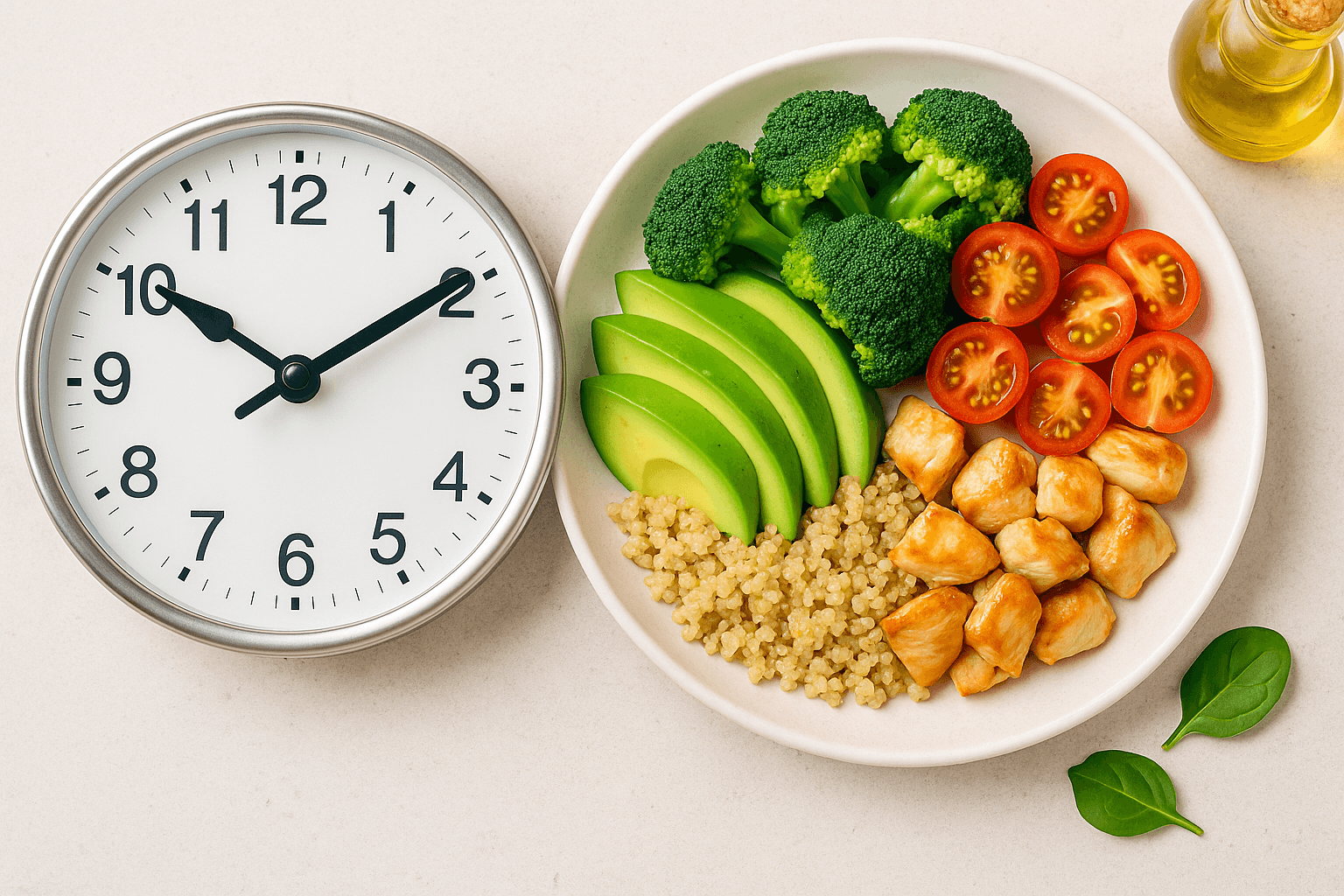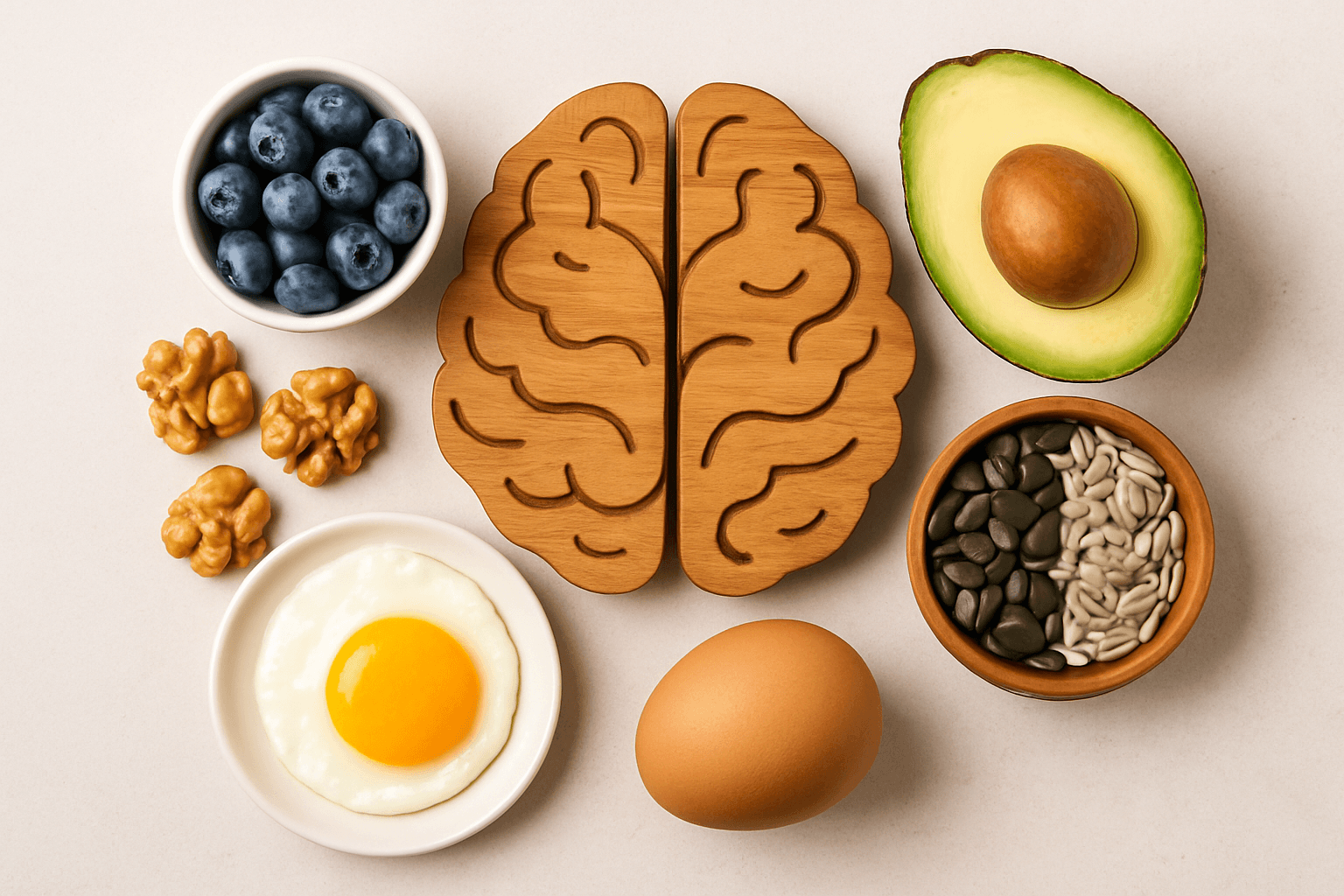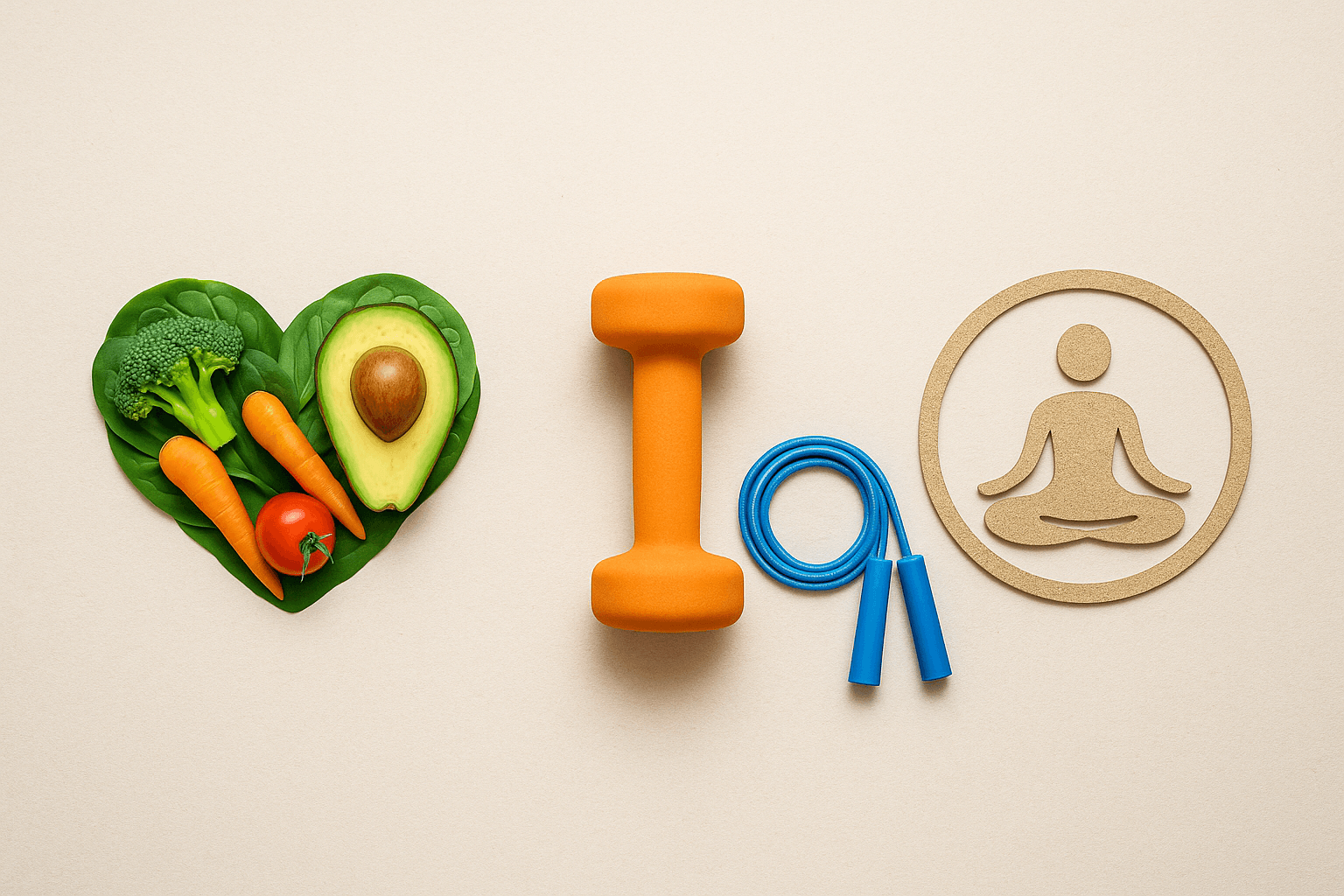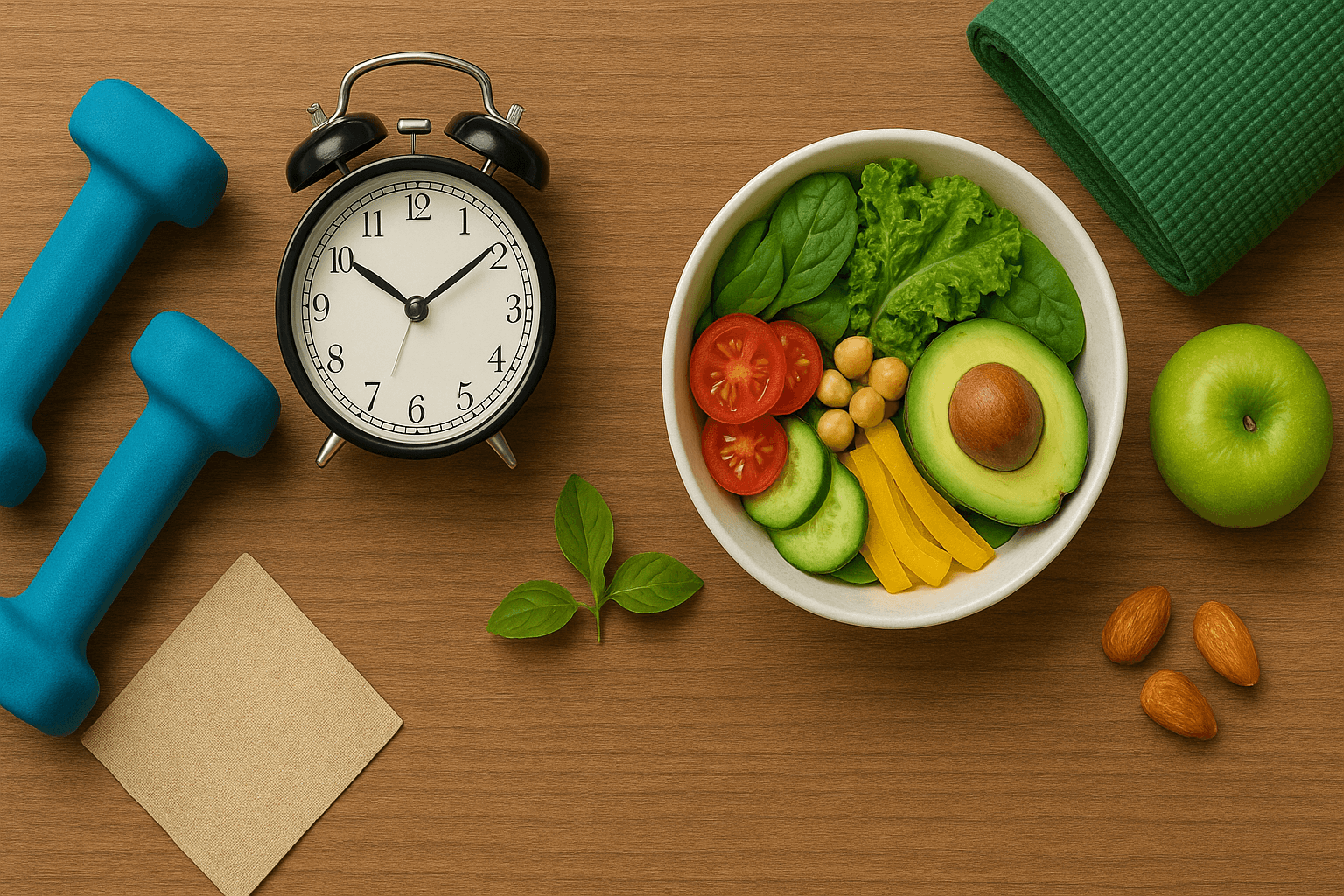Eat on Time: Harness the Power of Chronobiology to Lose Weight, Reverse Aging, and Reduce Inflammation
Published on August 26, 2025

Your body doesn’t only care about what you eat — it cares about when you eat it.
Welcome to the world of circadian nutrition: a way of eating that respects your body’s internal clock. It’s not a diet — it’s biological synchronization with the 24-hour rhythms your hormones, metabolism, and organs follow.
When you eat in tune with your body clock:
- You improve energy, mood, digestion, sleep, and fat burning
- When you eat at odd hours: you trigger fatigue, weight gain, insulin resistance, and inflammation
What You’ll Learn:
- What circadian rhythms are and how they impact digestion, blood sugar, and hormones
- The cost of eating out of sync with your body clock
- Why breakfast matters more than late-night snacks
- The science of time-restricted eating for weight, inflammation, and sleep
- How to build a meal schedule aligned with circadian biology
Based on Modern Nutrition in Health and Disease and leading studies in food timing and metabolic science.
What Are Circadian Rhythms (and Why They Matter for Metabolism)?
Circadian rhythms are 24-hour internal cycles that coordinate:
- Blood sugar regulation
- Insulin sensitivity
- Splanchnic blood flow and GI transit
- Ghrelin and leptin (hunger/satiety hormones)
- Cortisol and melatonin
Your body is metabolically “open” during daylight hours — and “closed” at night. Eating late disrupts this natural rhythm, leading to:
- Weight gain
- Insulin resistance
- Poor sleep
- Hormonal dysregulation
Why You Shouldn’t Eat Late in the Evening
Studies show that late-night eating negatively impacts your liver, pancreas, and gut clocks.
Common results:
- Higher glucose and insulin after evening meals
- Reduced fat burning at night
- Poor sleep due to elevated glucose and cortisol
- Greater fat storage and metabolic dysfunction
A Cell Metabolism study showed the same calories eaten earlier led to more weight loss and better health than when consumed later.
Time-Restricted Eating: A Science-Backed Way to Lose Weight (Even Without Counting Calories)
Time-Restricted Eating (TRE) limits eating to a consistent 8–12 hour window daily. It’s not about what you eat — it’s about when.
Benefits of TRE (e.g., 8 AM – 6 PM):
- Improves insulin sensitivity and stabilizes blood sugar
- Promotes fat loss and metabolic flexibility
- Reduces inflammation and oxidative stress
- Enhances mitochondrial function
- Improves sleep and gene expression of circadian rhythms
According to Modern Nutrition in Health and Disease, eating with the sun enhances glucose metabolism and reduces cardiometabolic risk — even without calorie restriction.
Why Breakfast Matters (and Dinner Doesn’t)
Insulin sensitivity is highest in the morning. That means your body burns carbs better at breakfast than at dinner.
The ideal breakfast:
- 20–30g of protein: eggs, tofu, salmon, Greek yogurt
- Healthy fats: avocado, nuts, olive oil
- Fiber-rich carbs: oats, sweet potato, berries
The late-night dinner trap:
- Keeps glucose high for longer
- Triggers fat storage and triglyceride production
- Reduces melatonin and worsens sleep
Solution: Front-load your meals — big breakfast, moderate lunch, light early dinner.
The Gut Clock: Your Microbiome Has a Rhythm Too
Your gut has its own circadian rhythm. Irregular eating disrupts microbial balance and increases inflammation.
Research shows:
- Eating time impacts microbiome diversity
- Night eating reduces beneficial SCFA (short-chain fatty acids)
- Misaligned eating increases endotoxins and gut permeability
Your microbiome loves regularity — steady meal times, consistent fasting windows, and daytime digestion.
How to Time Your Meals to Your Body Clock
Start with a 10–12 hour eating window.
- Sample: First meal at 8 AM, last by 6–7 PM
- Adjust earlier if possible
Keys:
- Eat a real breakfast (don’t skip!)
- Prioritize protein, fiber, and healthy fats in the morning
- Avoid sugary, low-protein breakfasts
- Avoid snacking between meals — space meals 4–5 hours apart
- Stop eating 2–3 hours before bed for better melatonin and deeper sleep
Your hormones like rhythm. Your results depend on consistency.
A Day With Meals Aligned to the Day-Night Cycle
7:30 AM: Wake + hydrate with lemon water or herbal tea
8:00 AM:
- Breakfast: Scrambled eggs, sautéed spinach, avocado, berries
- Movement: Light walk or stretch for 10 mins
12:30 PM:
- Lunch: Grilled salmon, quinoa, arugula salad with olive oil and walnuts
- Herbal tea or sparkling water
5:30 PM:
- Dinner: Lentil root soup with roasted Brussels sprouts
- Optional: small handful of almonds or a piece of dark chocolate
8:30 PM:
- No food. Wind down with chamomile tea, journaling, or reading
Real-Life Tips for a Clock-Friendly Lifestyle
- Start small: Begin with a 12-hour eating window and compress gradually
- Front-load your calories: Eat more earlier in the day
- Batch-prep circadian meals: Use a slow cooker or prep breakfast/lunch ahead
- Get morning light: Sunlight boosts circadian alignment; avoid screens at night
- Be consistent, not perfect: Social dinners are fine — return to rhythm the next day
Long-Term Wins From Eating With the Clock
Once synced, you unlock:
- Steady energy
- Improved insulin and weight control
- Restorative sleep
- Fewer cravings and less emotional eating
- Lower inflammation and stronger immunity
- Slower biological aging
Circadian eating doesn’t just change when you eat — it transforms how you feel, from the cellular level up.
Final Notes: Timing Is Key
Nutrition isn’t only about what you eat.
It’s about when your body is primed to digest, absorb, and use those nutrients.
When you eat in sync with your internal clock, it’s like serving your body a beautifully timed, well-set table.
So don’t just feed your body — sync with it.
Eat with the sun.
Sleep with the dark.
Fuel your rhythm — and your rhythm will fuel you.








